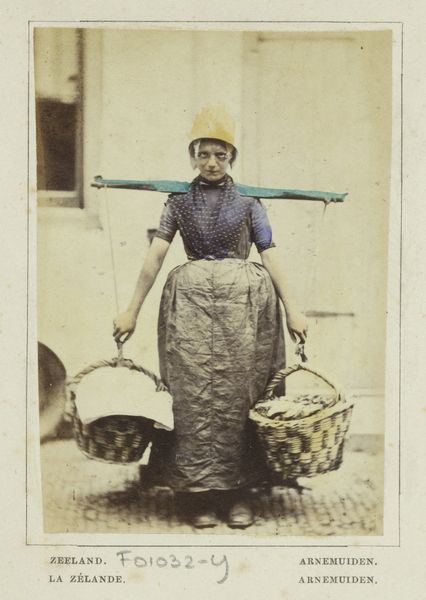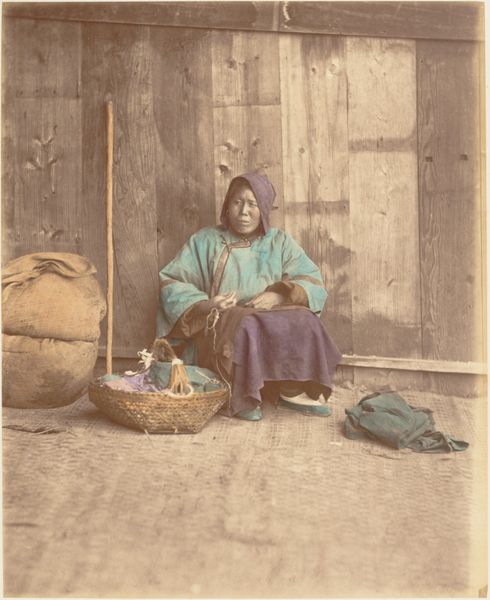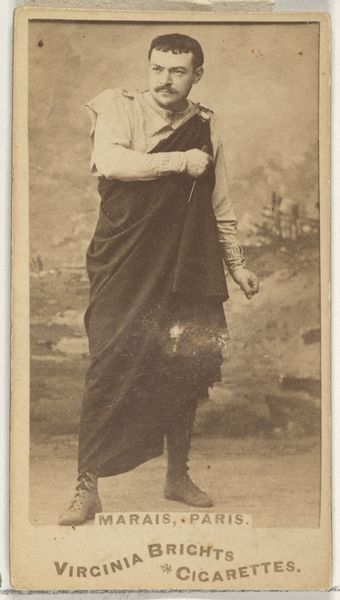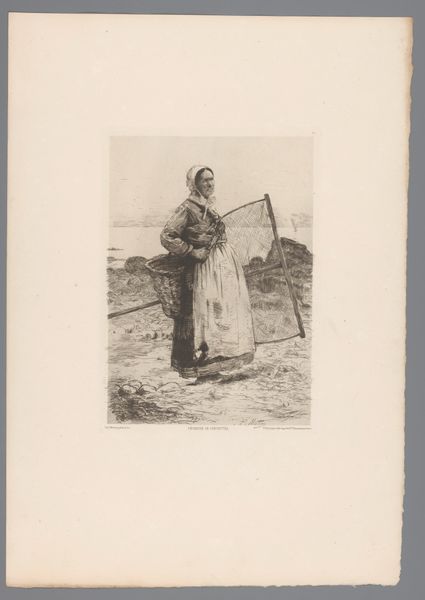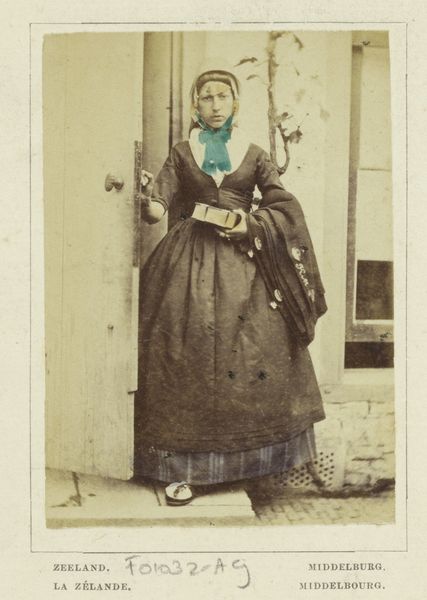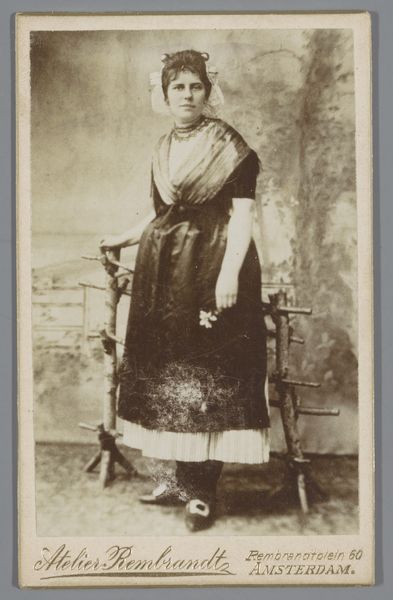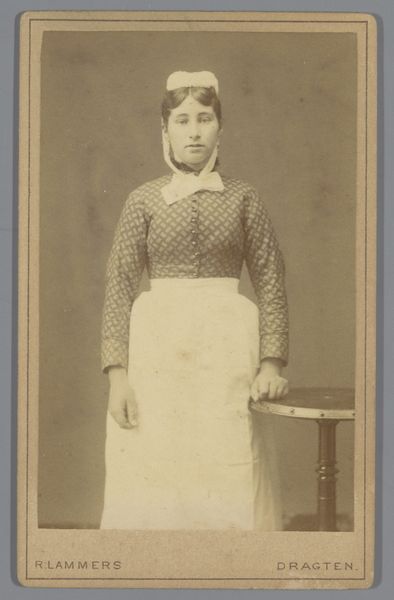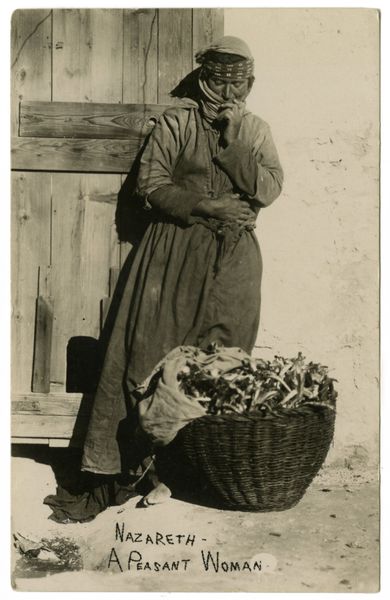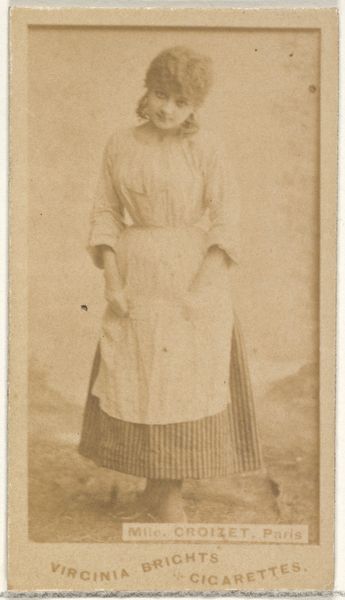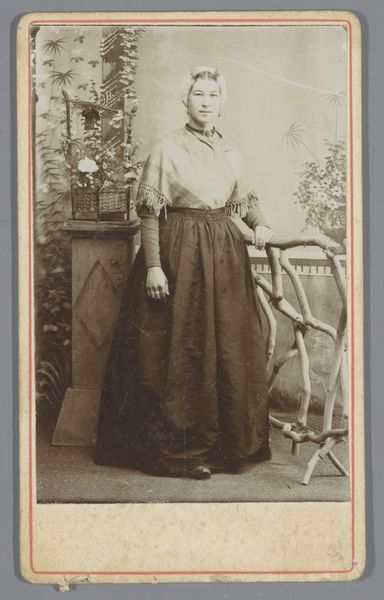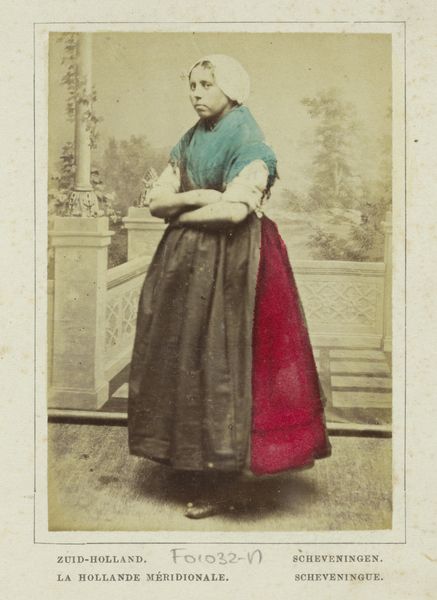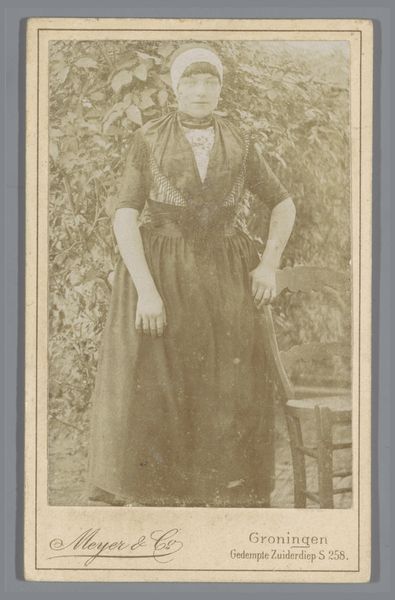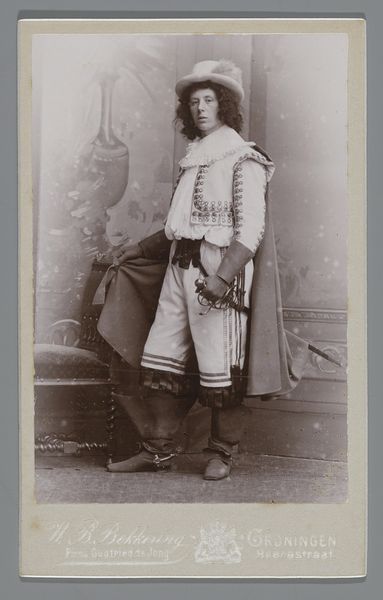
Portret van een onbekende vrouw op het strand van Scheveningen before 1866
0:00
0:00
photography
#
portrait
#
photography
#
realism
Dimensions: height 90 mm, width 60 mm
Copyright: Rijks Museum: Open Domain
Curator: This remarkable portrait, simply titled "Portret van een onbekende vrouw op het strand van Scheveningen," presents an intriguing example of early photography before 1866 by Jacobus van Koningsveld. What are your immediate thoughts? Editor: There's a somber, almost stoic quality to this woman. She's placed directly in the center, and there is very little to offer an alternative view than looking directly at her. She seems burdened, yet there's also a quiet dignity in her gaze. Curator: That's perceptive. Photography during this era often mirrored painted portraiture in terms of composition. Considering it was pre-1866, the subject would have had to remain perfectly still for a prolonged period. Notice how that restriction affected staging, pose, or perhaps even societal understandings of class or social standing at the time. Editor: Definitely. It is a really important context to bring up! You feel the weight of representation then, particularly for women, or someone from an ostracized demographic, like working-class subjects. This image is also doing double duty, not just as an anonymous portrait, but likely taken as source of reference for someone to paint. It captures a person, yes, but also stands in as documentation. Is the beach significant in terms of her identity as a merchant? What is she trying to sell with the products she keeps in that basket? Curator: Fascinating points! This form of early realism had the radical capacity to freeze moments in the life of someone that would have historically remained unknown. In capturing "an unknown woman," it challenges us to give her due significance in a space often exclusively reserved for elites or important leaders. Do you believe it succeeds? Editor: Well, as a woman who appears not to be part of the elite, I want to consider questions of self-representation here. Consider the heavy shawl, basket, and general setting—what does that convey about labor? There's no idyllic setting or background; her surroundings emphasize that it is indeed a working, industrial part of town, and not some serene landscape. I wonder what stories she could tell about Scheveningen and how we engage with those historical accounts in shaping contemporary feminist movements. Curator: It really provides insight to how labor intersects with portraiture. Thank you, it gives this photograph a whole new sense of weight. Editor: My pleasure. These glimpses into the lives of women remind us about all that still needs change.
Comments
No comments
Be the first to comment and join the conversation on the ultimate creative platform.
